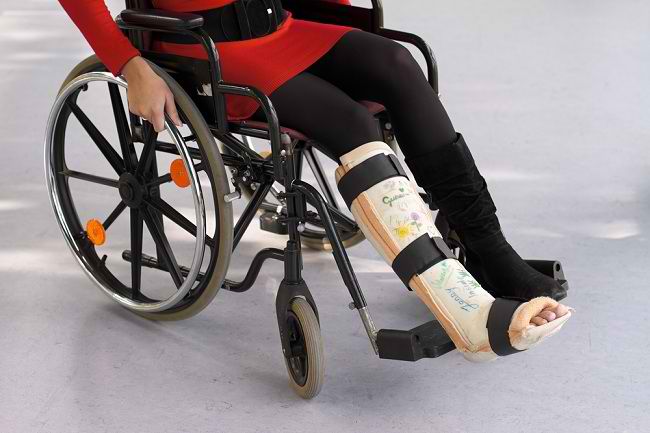Never Left Only, The Body Casts Should Be Treated
The cast is used as a fixation tool on fractures that occur in the feet, hands, or other body parts. The purpose of using a cast is to protect and stabilize the broken anatomical structure of the bone.
When you have to wear a cast, there are ways to treat it to keep the cast working and the broken bone safe and fast recovery. Understanding the type and function of the cast you are using, will help you care for the cast to achieve optimal healing.

Gypsum Difference Fiberglass and Gypsum Plaster
In general, the cast is divided into two types, namely fiberglass and plaster. Each has its own advantages.
Excess casts made from fiberglass are:
- The cast of this material dries faster. When the cast is finished, you can use it immediately.
- Fiberglass lighter because it is made of fiber
- This plaster type is more durable.
- Allows better air circulation.
- Available in various colors.
- Can be penetrated by X-rays, better for bone inspection through X-rays when you are still wearing a cast.
Meanwhile, excess plaster made of plaster is:
- Easily printed or made.
- The price is cheaper than plaster made from
Gypsum Treatment when Used
You are not advised to remove the cast yourself. When your bones are healed, the doctor will open the cast. And while still wearing a cast, you must understand how to take care of yourself. Here are some ways to treat a cast:
- Learn to adapt When you first use a cast, you must learn to adapt. The doctor will tell you when the cast is dry and ready to hold the body weight. Follow the doctor's instructions so that you will not have trouble getting on the plaster when you are back from the hospital. Keep in mind in the foot cast, there are some that can be used for pedestal runs, some are not. You should make sure to see a doctor.
- Avoid getting water
Keep the plaster dry. Damp cast may cause skin irritation and itching. In addition, it is not possible to cause infection when there are injuries on the body of the plaster installed. Plaster cast that is exposed to water will usually be soft and reduce its function as a broken bone support.To anticipate, coat the plaster with plastic when you take a bath. Use a rubber band or tape at the end of the cast to tighten the plastic cover and make sure the cast is completely exposed to water. When finished, immediately reopen the plastic cover. You can also use a special plaster cast cover that can be purchased at the pharmacy. If the cast is already wet, call your doctor immediately for further advice.
- If swelling occurs When using a cast, the possibility of swelling in the covered part of the cast. Swelling can cause the pain and slow the healing. You can do the following things to reduce the swelling:
- In the first 1-3 days after plastering, place the higher plastered body parts or pads using a pillow to keep the position higher than the heart.
- Wiggle the fingers on the hands or feet covered in a cast.
- In the first 2-3 days after using the plaster, compress the cast with ice. Way, wrap the ice with a towel and stick it on the cast. Compress the swollen part, ie on the casts and not on the skin, for 15-30 minutes, every few hours.